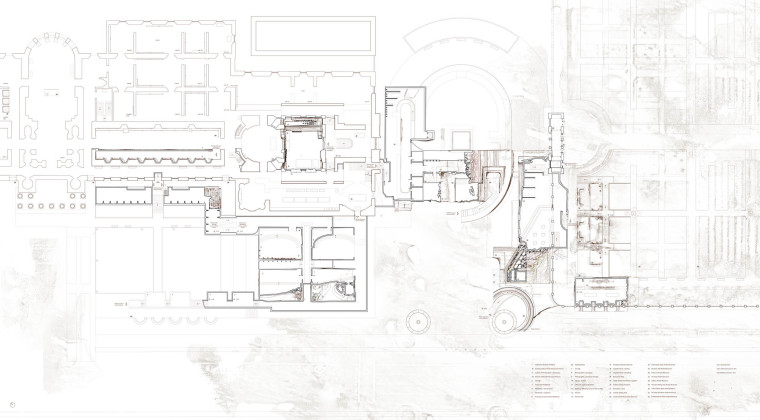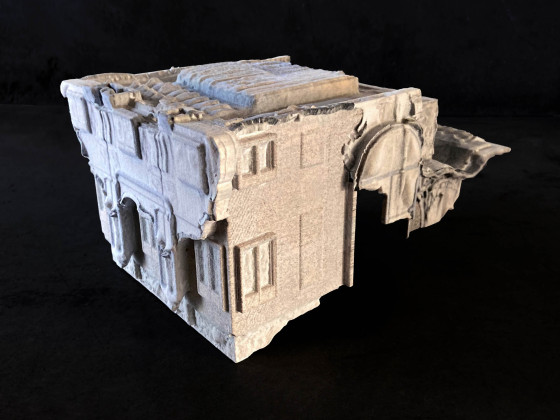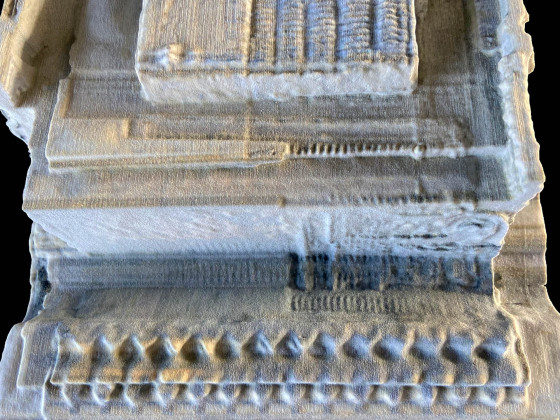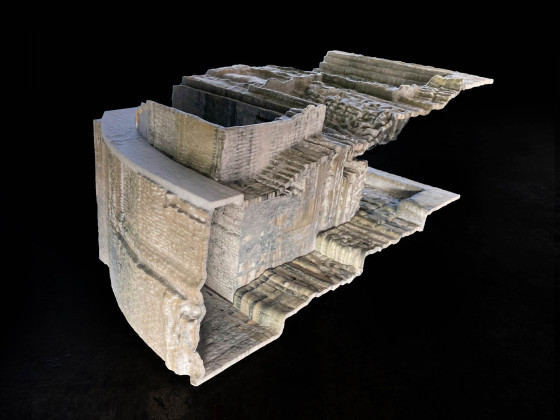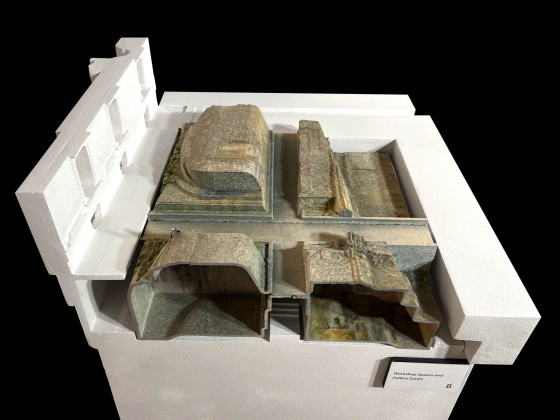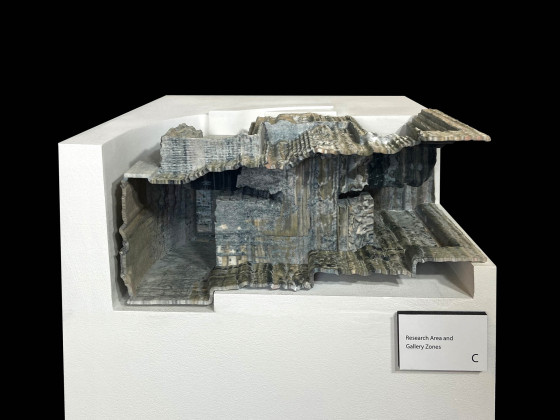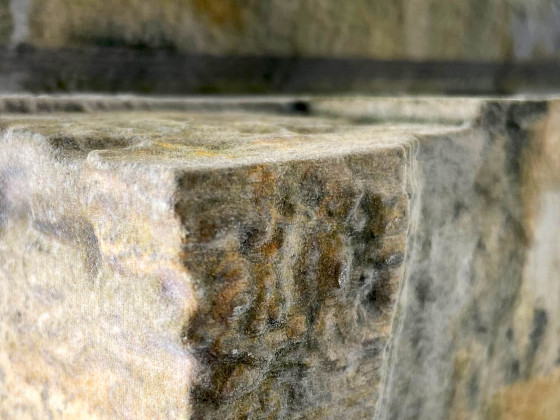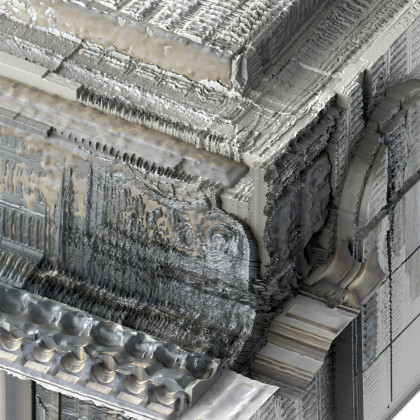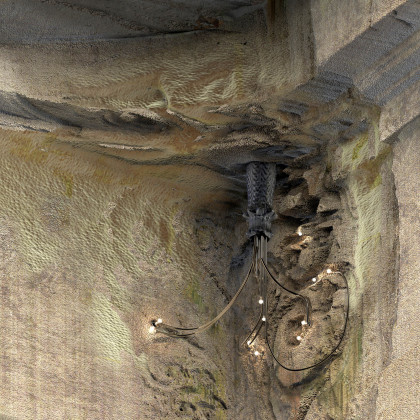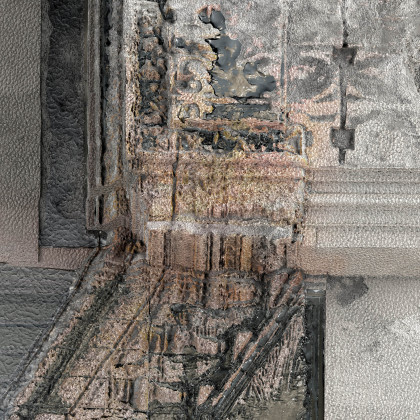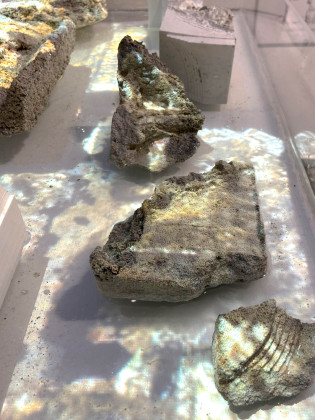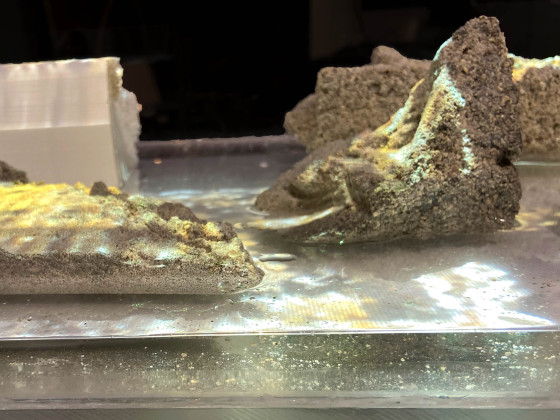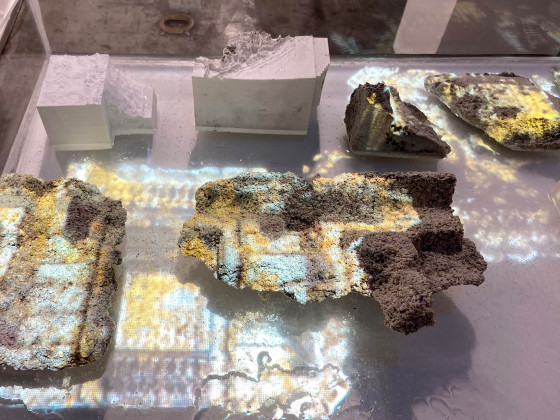Wall, Hall, Dust & Rust
Southern California Institute of Architecture student Esin Karaosman, describes her undergraduate thesis project: Wall, Hall, Dust & Rust – Prado’s “Critical Zone” 1
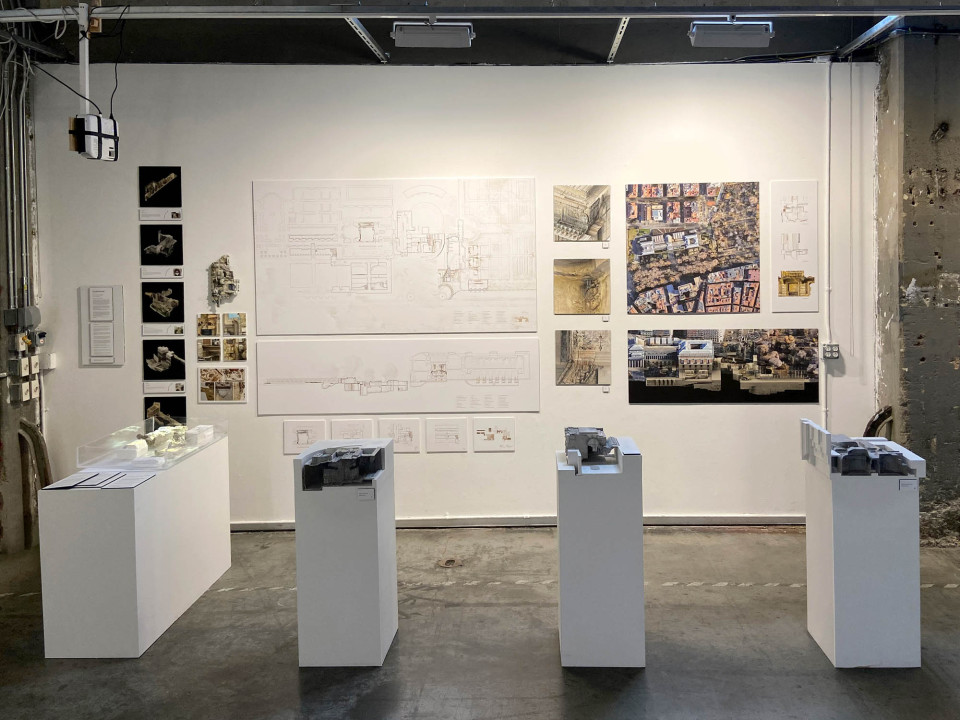
This is a project of speculative preservation.
In the contemporary world, there is a problem of preservation beyond the maintenance of material conditions. This in and of itself is a mystery because it is tantamount to a freezing of time and entropy. However, there is an even more enigmatic problem of preserving the images we associate with history. Representations, constructed social meanings, and intellectual categories are ultimately the most valuable things to concern. It is as much an optical problem as it is a material one.

This projects starts with looking closely to the walls, not through their architectural plans and sections where they become solid, fortified boundaries for us; but in reverse, it starts with looking at things themselves, the walls, as how they appear to us today: Through their visible bodies, without their constructed meanings, with hyper-attention, through the lens of imaging technologies.
The competition call to expand the Prado Museum becomes where this thesis locates itself.
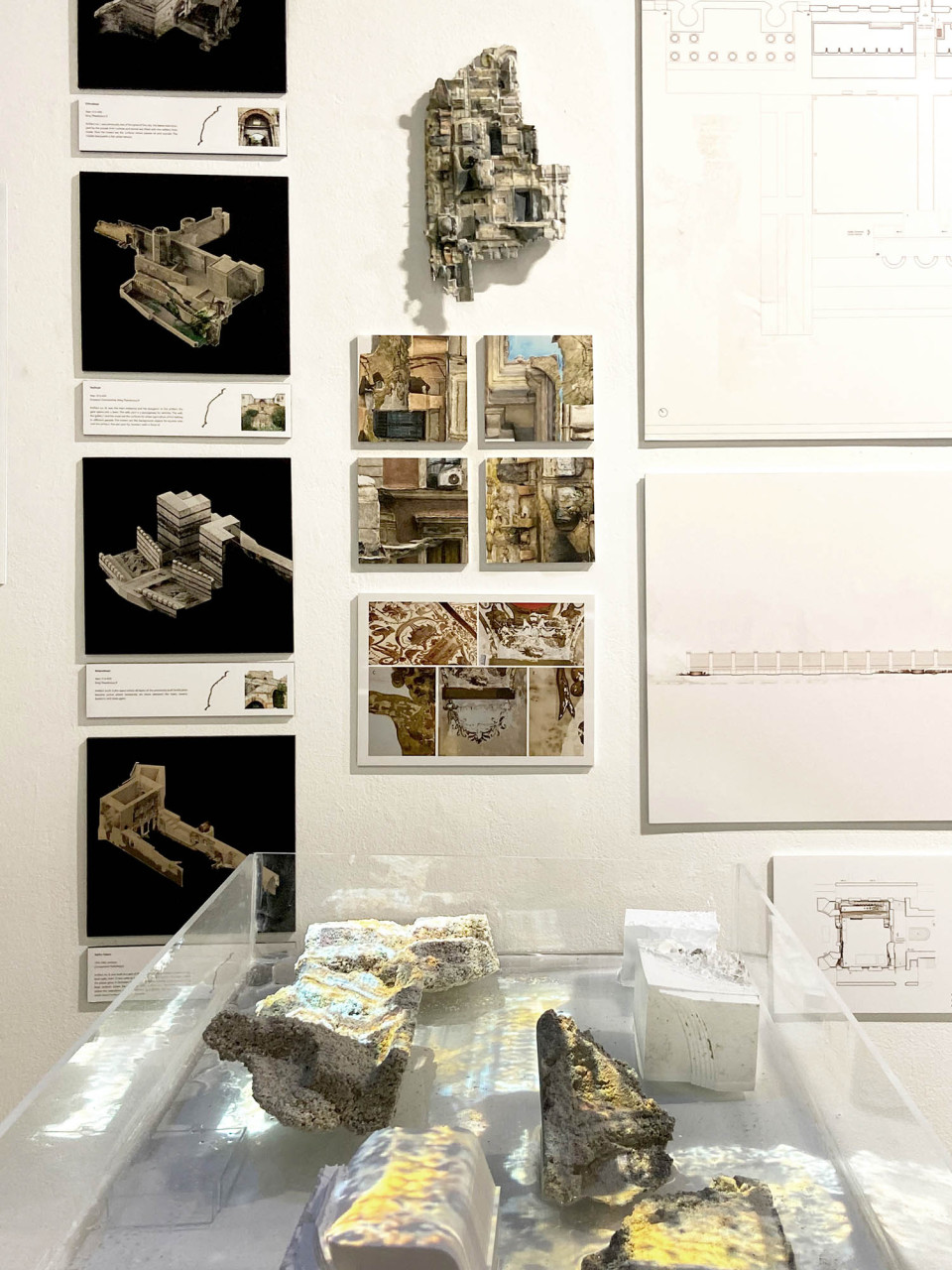
It is apparent that the crack between what things are and how they appear to us becomes visible through a literal crack in the walls of the Hall of Realms, the 17th century building which has been acquired to be used as an extension by the Prado Museum in Madrid. In October 1993, the rainwater was seen filtering down through the cracks, the walls and the artifacts were decaying, how they appeared to us was changing: “The alarm bells went off, both in the building -physically- and also in the media.” 2
This thesis wants to consider the wall as the critical zone, the thickness which is hard to understand, which is not constant and far from equilibrium, which is fragile and unknown; in order to create new spaces, new zones which were not visible for us before, in the highly controlled and preserved environment in Madrid, Spain.
The zones become the spaces where we stitch the fragments of the existing surfaces that we have been occupying, back together again; with engaging both their physical decay, but also with another kind of decay, which happens virtually. These stitched zones create a new synthesis for alternative histories and future realities.
The design of the extension is treated in this project as an unusual kind of collage problem.
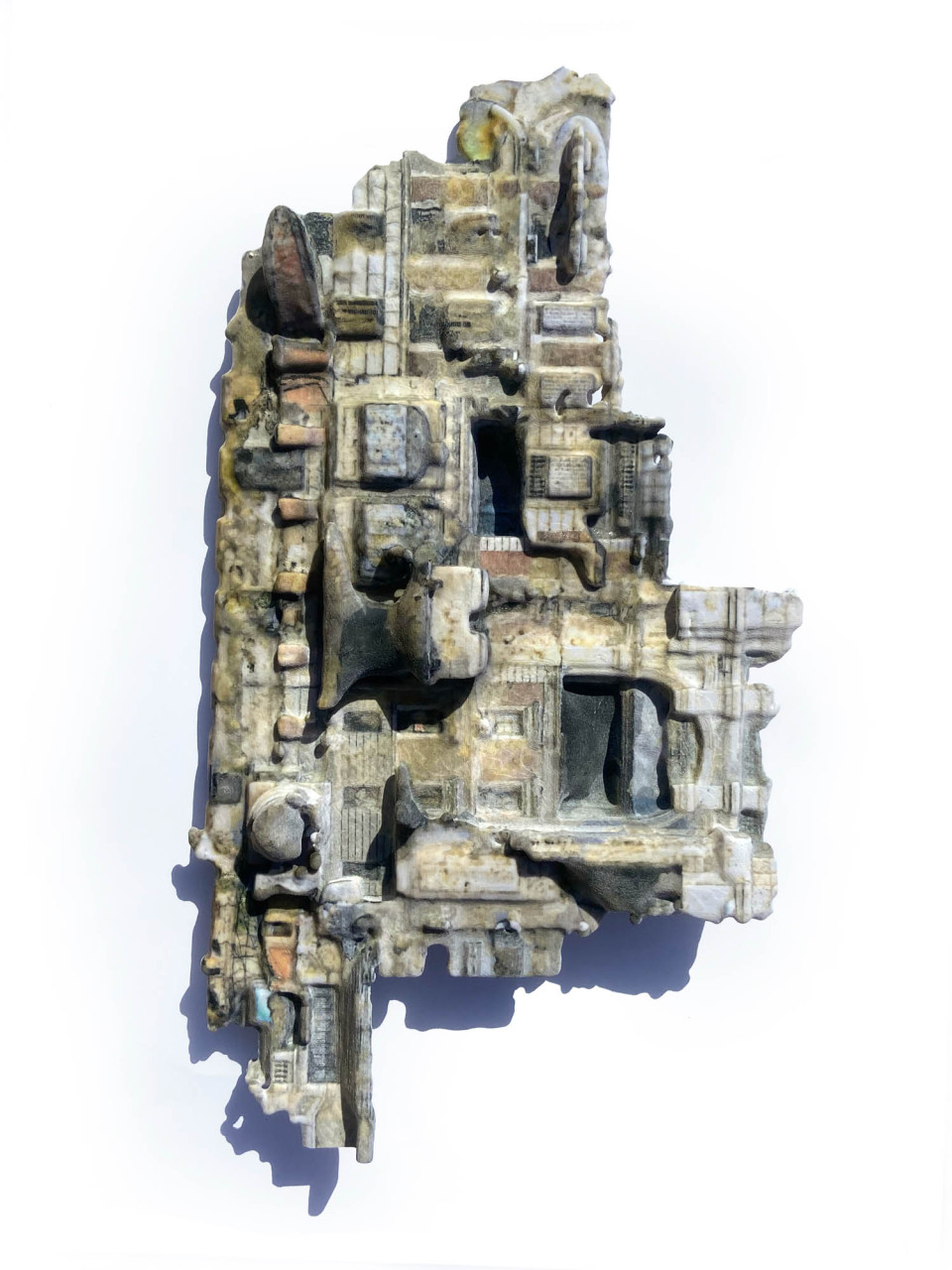
The photogrammetric scans of the existing surfaces, their recordings; merge into a thin, glitchy, fictitious body.
The space of the extension arises by merging the found, fictitious body of the Hall of Realms and the constructed, highly controlled grounds of Prado. The extension becomes the thickness where we move in-between, horizontally and vertically.
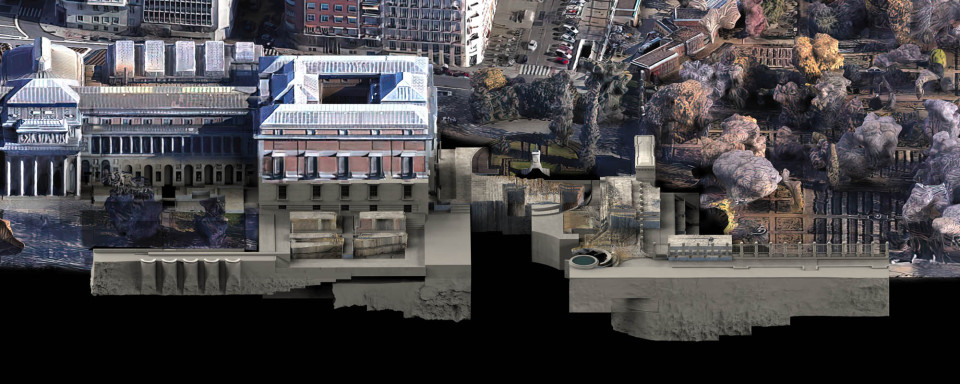
As the extension doesn’t belong to Prado nor to the Hall of Realms but it is born out of an act of stitching these realities together. In this manner, it also stitches the constructed seams and boundaries of the site; it does so through mediating between the Prado Museum, the Botanical Garden and the urban grounds that we walk on everyday.
We access to the extension with seeping through these larger gaps; from the inside of the museum, from the botanical garden, and from the urban area. All of which lead us inside the galleries.
We occupy these spaces, not as boundaries which divide inside and outside, not as boundaries which divide public and private; we also occupy the zones that are above and below them, the spaces which are also occupied: Sometimes by visitors or passers, sometimes by artifacts or everyday objects, sometimes by water and algae. They become the spaces where we see the existing in different ways.
Different internal programs with their highly detailed descriptions that are required for the extension, such as storage, photographic laboratory, carpentry and maintenance workshops, library and research areas, restaurant and bookstore; they all seamlessly merge with the existing spaces that we have been occupying before, to create different zones.
In the meantime, the galleries where we walk are connected and get imbricated with all these zones.
In these spaces, we no longer occupy the fiction that the palace and the garden constructs, we no longer pass through the walls and enter the touristic halls. We occupy the thickness and surfaces of them, and their new fictions.
As the images also have a similar kind of decay that we see in the physical surfaces; the precise cracks of the scans, the virtual decays, create smaller scale zones which will get infused with the algaes.
We no longer see the images, but the pigments of the pixels allude to them. C,M,Y,K algaes become the pigments which occupy these precise cracks of these surfaces.
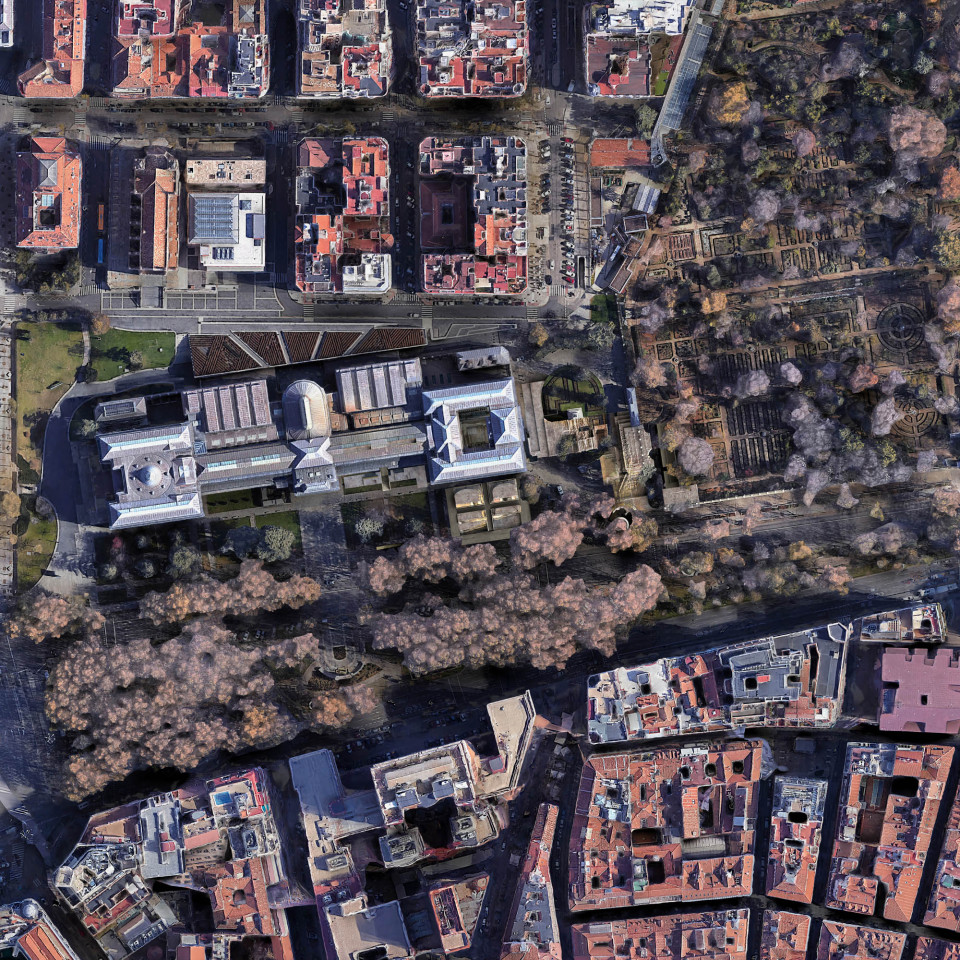
The images become most alluding for us in the satellite view, where we visit the extension remotely; where the physical pigments of the extension merge with the pixels of the historical site, in the maps that we visit though our virtual devices.
With this seamless collage, in the historically charged site of the Prado, Spain; what we see, and the images are no longer preserved, but their scanned bodies and resolutions are used to create a new synthesis in order to generate multiple meanings, alternative histories, and speculations for future physical, virtual and material realities.
An unstable synthesis which will always be slowly changing, a synthesis from a scale of a pigment, an algae, to a scale of a satellite imagery. A synthesis which alludes to the Hall of Realms, where we can never see it entirely, for the ones who are interested in history.
As this thesis looks at the problem of preservation in highly controlled environments; now what we see and how things appear to us are no longer preserved but through a seamless collage and the act of stitching; we start to occupy new zones and their new fictitious realities.
References
1 “Critical” because it is far from equilibrium, because it is fragile. (...) “Zone” because it is still largely unknown; because it differs from what used to be called; because it has a topography very different from that of a planet viewed from space.”
Latour, Bruno. Critical Zones Exhibition. 2020.
2 “In October 1993, rainwater was seen filtering down through the cracked, poorly maintained roof of the Prado Museum’s building. Alarm bells went off, both in the building and in the media, and the public learned what until then only a few insiders knew: that one of the best and most famous museums in the world had been in desperate need of repair.”
Ruano, Miguel. Prado Museum Competition: Chronicle of an Absurdity (1995/96). 2017.
 14.03.2023
14.03.2023



